Health Care > QUESTIONS & ANSWERS > Pathophysiology - Exam 2- Study Guide _Spring 2020_. (All)
Pathophysiology - Exam 2- Study Guide _Spring 2020_.
Document Content and Description Below
Clinical manifestations – appendicitis o Right, lower abdominal pain, nausea, occasional diarrhea Cause of pseudomembranous colitis and nonpharmacologic treatmentso (Often called antibiotic as... sociated colitis) Acute inflammation and necrosis of the large intestine caused by Clostridium difficile. Exposure to antibiotics is the major factor predisposing to the development of this disorder. Stop the affecting antibiotic. Treat ischemia, fecal transplant, colectomy Clinical manifestations – cholecystitiso Acute: Inflammation of the gallbladder wall. o Chronic- inflammation of the gallbladder wall attributed to persistent lowgrade irritation from gallstones or recurrent attacks of acute cholecystitis. Cause of Helicobacter pylori (H. pylori)- o Transmission person to person, fecal-oral route, reservoir in water sources. H. pylori often causes peptic ulcer disease Clinical manifestations – gastric carcinoma o Early- none. o Advanced- anorexia, weight loss and GI bleed Causes of gastroenteritis due to Salmonella o Consumption of raw or undercooked chicken/eggs o Diarrhea, N/V, abdominal pain Complication of perforated gallbladdero Sepsis. o Rare complication of acute cholecystitis Cause of jaundice and disease associated with jaundiceo Elevated levels of bilirubin o Caused by a buildup of bilirubin, which is a waste product in blood. An inflamed liver or obstructed bile duct can cause jaundice. Diseases associated: infections of the liver from a virus (Hepatitis), overuse to Tylenol. Define the following terms: dysphagia; occult bloodo Dysphagia: difficult or painful swallowing o Occult blood (cause by polyps) blood you can’t see with the naked eye, FOBT (fecal occult blood test). Means there is usually bleeding somewhere in the digestive tract. What should patients with newly diagnosed pancreatitis avoid? o Alcohol What causes greenish-yellow emesis? o Bile, caused by vomiting on an empty stomach, or bile reflux. Most frequent location of peptic ulcerso Proximal Duodenum What types of hepatitis increase the risk of hepatocellular carcinoma? This study source was downloaded by 100000830772748 from CourseHero.com on 04-30-2022 02:18:24 GMT -05:00 https://www.coursehero.com/file/70394510/Pathophysiology-Exam-2-Study-Guide-Spring-2020-docx/ o Hep B and C Clinical manifestations of chronic gastritis o Upper abdominal pain o Indigestion o Bloating o N/V o Weight loss/loss of appetite o Hematemesis may occur bc of damage to the gastric epithelial mucosa What types of things put a patient at risk for developing acute gastritis? o Ingesting irritating substances- alcohol, aspirin, NSAIDs, viral bacteria, autoimmune Clinical manifestations of acute gastritiso Anorexia, nausea, vomiting, and postprandial (after meal) discomfort Causes of hiatal herniao Conditions where intraabdominal pressure increases: ascites, pregnancy, obesity, chronic straining or coughing o Loosening of the muscular band around esophageal and diaphragmatic function What is the cause of a rigid abdomen in peritonitis? o Peritonitis is inflammation of the peritoneum. Inflammation and abdominal spasms Module 5 What is cryptorchidism and complications associated with the condition? o Hidden testes, the testes did not descend all the way. Failure to treat this can cause fibrotic tubules with deficiency in spermatogenesis, infertility. Clinical manifestations – acute prostatitiso Ch31, slide 32- Fever, chills, LBP, frequency, urgency, and dysuria. Tender and swollen prostate What is a complication of removing too much fluid during dialysis, and what would you want to monitor? o Complication- Low BP o Monitor- BP, Nausea and dizziness Clinical manifestations – pyelonephritis (kidney infection)- o Chills, flank pain, nausea, vomiting, CVA tenderness o Stretching of renal caps causes pain Individuals with HPV (human papillomavirus) are at risk for developing what disease? o Cervical cancer Define the following terms: enuresis, stress incontinence, micturition, overflow incontinence: o Stress incontinence- small amounts of urine are voided involuntarily with intraabdominal pressure. This study source was downloaded by 100000830772748 from CourseHero.com on 04-30-2022 02:18:24 GMT -05:00 https://www.coursehero.com/file/70394510/Pathophysiology-Exam-2-Study-Guide-Spring-2020-docx/ o Enuresis- intermittent incontinence while asleep (usually in children but not always). o Micturition- the act of urinating o Overflow incontinence- when the bladder becomes so full it leaks urine [Show More]
Last updated: 2 years ago
Preview 1 out of 9 pages
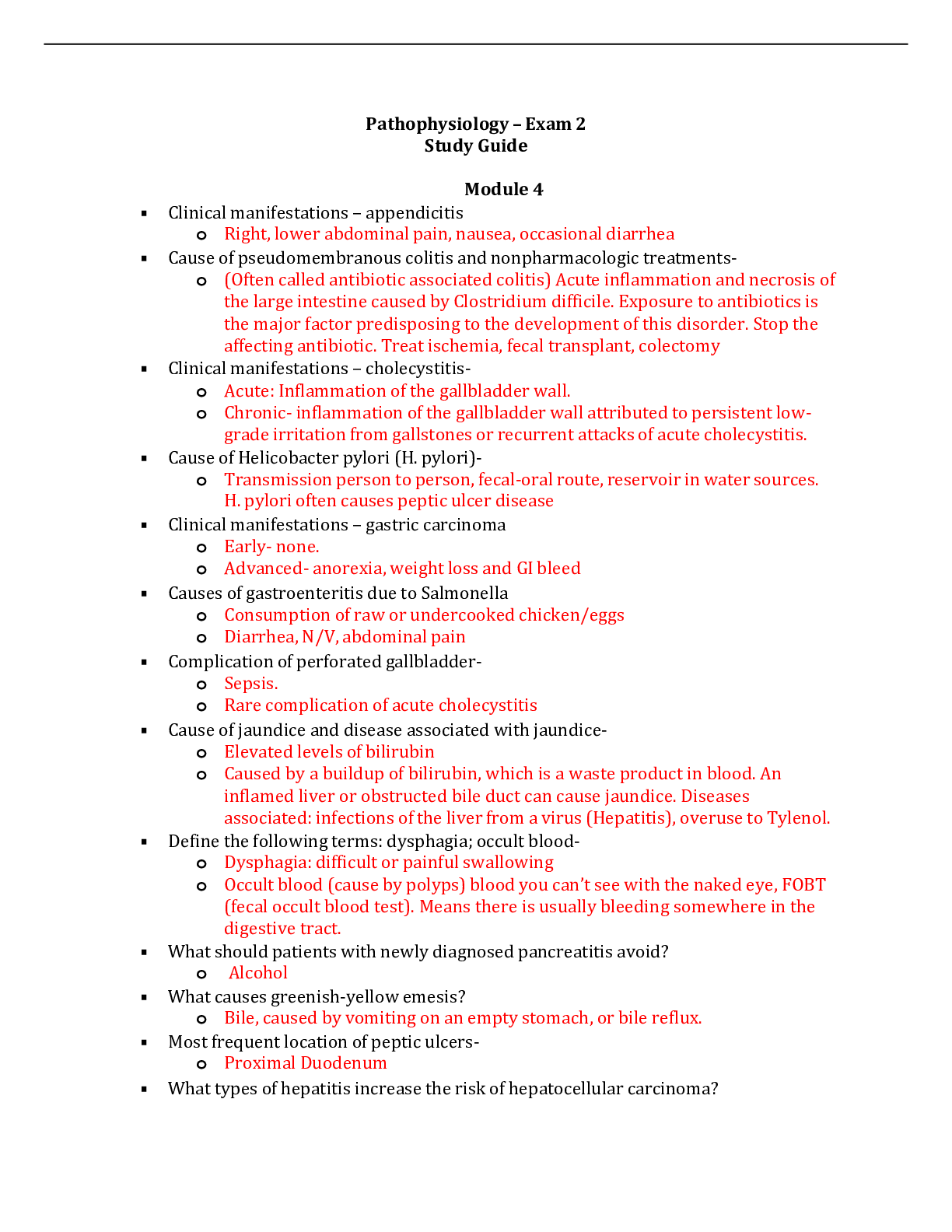
Buy this document to get the full access instantly
Instant Download Access after purchase
Buy NowInstant download
We Accept:

Reviews( 0 )
$7.50
Can't find what you want? Try our AI powered Search
Document information
Connected school, study & course
About the document
Uploaded On
Apr 30, 2022
Number of pages
9
Written in
Additional information
This document has been written for:
Uploaded
Apr 30, 2022
Downloads
0
Views
82


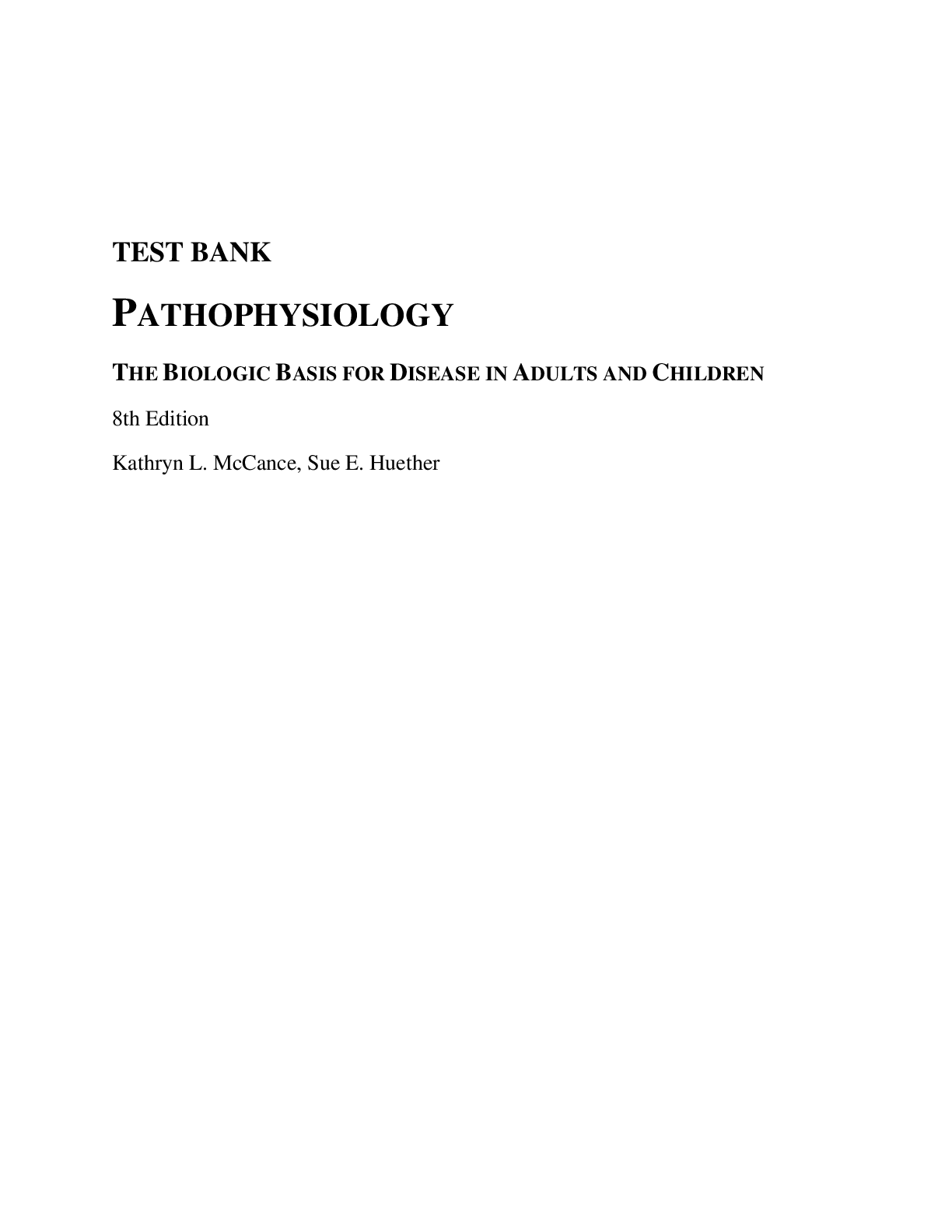

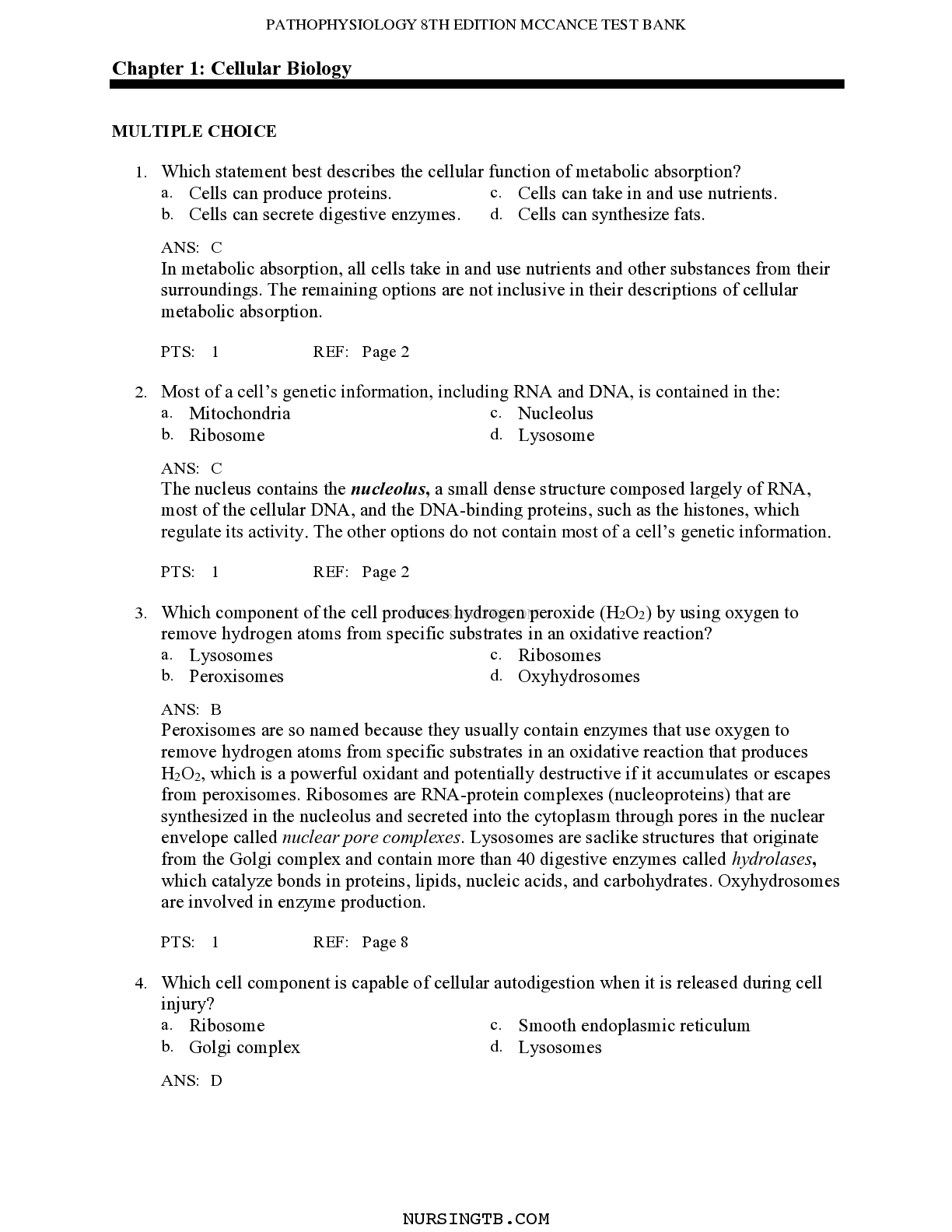
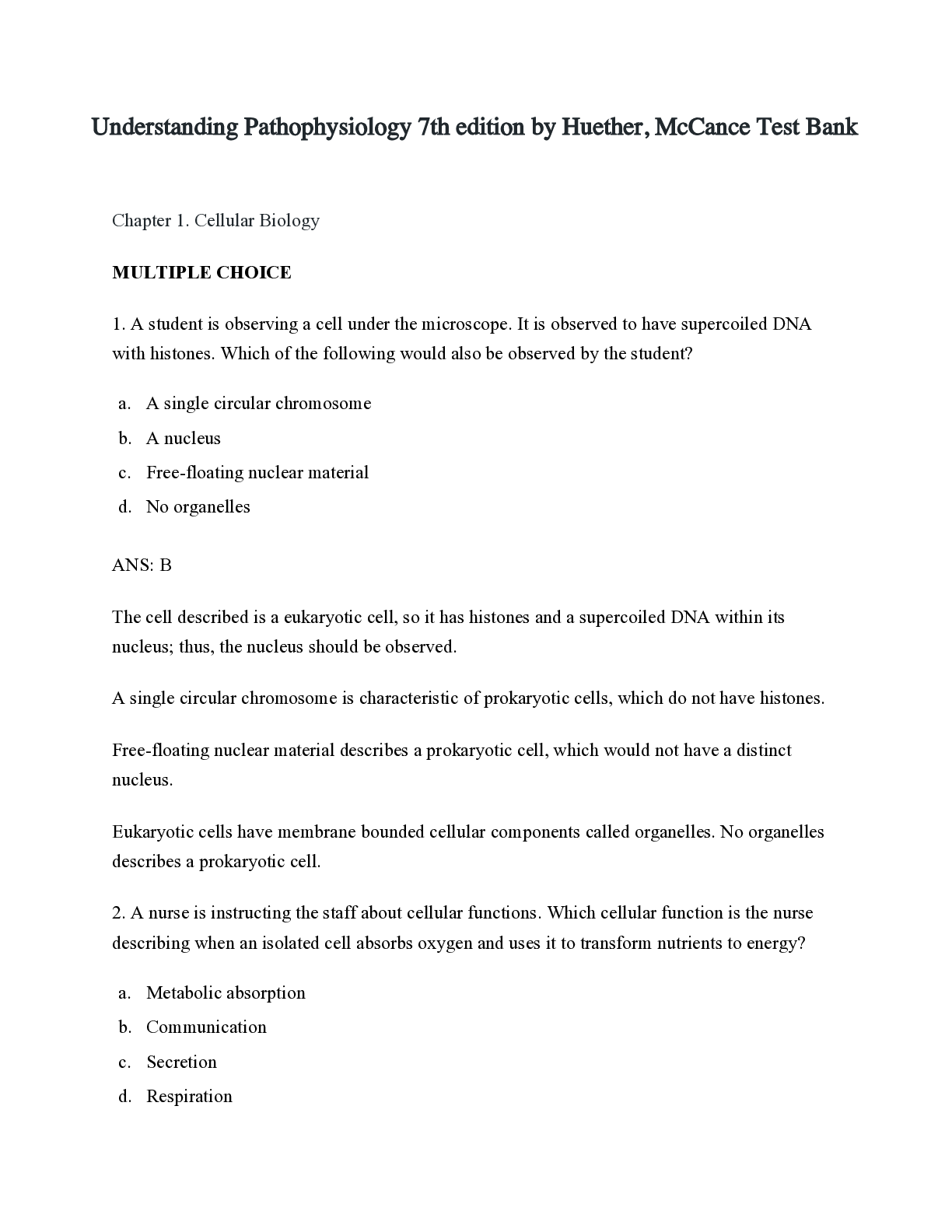



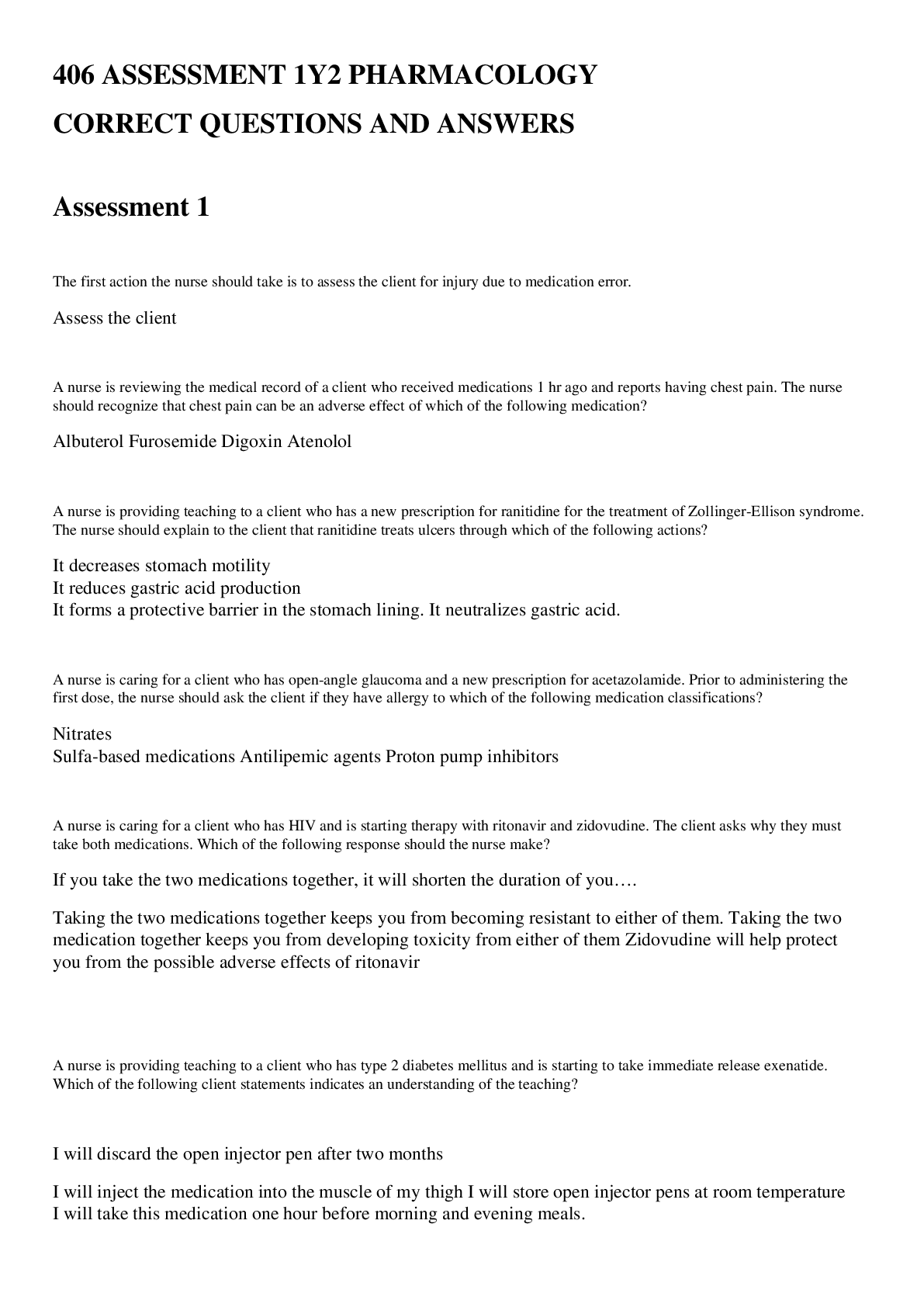
.png)



